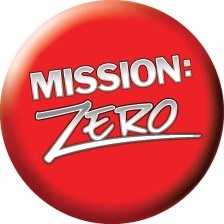At the end of January we had the privilege of having an extended conversation with Murray Elliott the relatively-new president of Energy Safety Canada (ESC), formerly known as Enform.
On his jacket was a lapel pin, the red circle of the “Mission: Zero” campaign. He had obtained it the day before in Regina, meeting with the Workers Compensation Board.
This lead to a discussion about the goal of eliminating all workplace accidents and deaths, with Pipeline News at times playing devil’s advocate, as reporters are wont to do.
When asked if we can ever get to zero, he responded, “Many, many, many organizations and operations have demonstrated they’ve gone decades without injuring people. Will we get there tomorrow? No. But this is about, like WCB, Mission: Zero, there can be no other target than getting to zero. That’s a combination of eliminating the hazards and having the right workplace culture.”
Pressed him on the issue of human nature, how people can be young, drunk or simply stupid, he replied, “You’re not going to make everyone into saints. That’s where you need the right kind of safety net, and multiple barriers in place, such that a single person slip is not the only barrier to having a bad outcome. So when you do have incidents, make sure you learned from them, and what failed. Nothing is because of just one action. It’s a series of actions. If you can intervene in any point in that, that’s really the goal, so that one slip up from one individual cannot get you to serious mishap.”
Elliott is, of course, right in that zero injuries, zero deaths, truly can be the only goal anyone should aspire too. The official number of people who died in the construction of the Hoover Dam was 96, although the Bureau of Reclamation website says that number may be has high as 112, if you include preliminary work. Building the initial Canadian Pacific Railway resulted in the deaths of “some ,1000 Chinese labourers,” according to former Prime Minister Stephen Harper, when, in 2006, he apologized for a head tax on Chinese people.
The days where expecting X amount of deaths in a certain project size are over in the 21st century.
Yet still, mankind is fallible.
In the upcoming months, we will be even moreso, with the impending decriminalization of marijuana.
The oilpatch is going to have a hell of a time enforcing marijuana bans at work, with its pending legalization. Good luck with that.
But beyond Mary-do-you-wanna, other illicit drugs, and most of all, alcohol, continue to be consumed and will always be consumed.
People working hard over long hours will be overtired, prone to slip ups or drowsiness. There’s a reason injuries are more likely at the end of a hitch, or week.
Sometimes people are just stupid. We’ve all worked with someone who was just clueless. Stupid is as stupid does, as Forrest Gump said.
Then there’s mechanical failures. Rigging may fail. Something might break, a pipe might burst. It’s a dangerous place, this oilpatch.
It sounds like we’re making excuses. But the reality is, our culture in the oilpatch has collectively recognized that no excuse is tolerable anymore, and that there is only one goal: zero injuries. Zero deaths. Everyone goes home safe.
In that same interview, Bob Ross, manager for ESC Saskatchewan, said, “Since about 2002, we’ve seen a 67 per cent reduction, a steady decline in lost time injury rate. This year, in 2018, all four of our rate codes that we look after, have seen a decline. The greatest decline of any industry in the province was the operation of our oil wells. The biggest flow of cash return on premiums was the actual drilling industry. Right now, this is only time in the history of the oilpatch our time loss injury rate is lower than the provincial average, which is absolutely, fully supportive of where this industry is going and the commitment to health and safety.”
That, friends, shows we are indeed on our way to Mission: Zero.




